Updated: January 20, 2006
Introduction
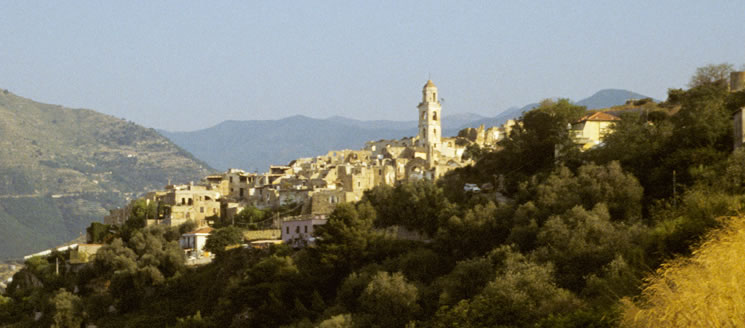 |
This is a totally opinionated guide book to Bussana Vecchia. It tells where it is, what it is, how it is when it is, why it is, what's in it, and what can be done about it. So it's going to be a lengthy guidebook that will never be completed. I have split it into several sections, starting at the regional level and zooming in on the village and the house in dedicated sections. You can move between the sections via the navigation table above this page. |
I will use GPS coordinates to pinpoint
some locations. You can either use them for your GPS system or verify the
locations using the lat/long option in route planners like MSAutoroute or
on the web at Mapquest.
I invite all readers who have stayed at this special village to contribute
his or her views and opinions to mail me at:
Region: Liguria and
Piemonte
The village of Bussana Vecchia is located at latitude 43.837N and
longitude 7.829E. It was partially demolished by an earthquake in 1887. More
data is given in the links on the village page.
It is about 10 minutes by car (using the new intermediate Aurelia-bis tunnel
road) East of San Remo on the Italian Riviera dei Fiori. It also is about
45-50 minutes and 37 tunnels away (door-door) from the International airport
in Nice via the autostrada and autoroute (38 tunnels on return route). Via
that same autoroute, the town of Ventimiglia is 20 minutes and 12 tunnels
away. The French border is 17 tunnels and 25 minutes away on that same road.
If you have children in the car you may want them to check this out.
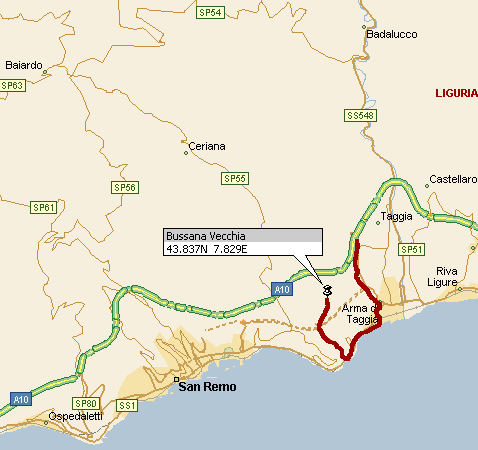 |
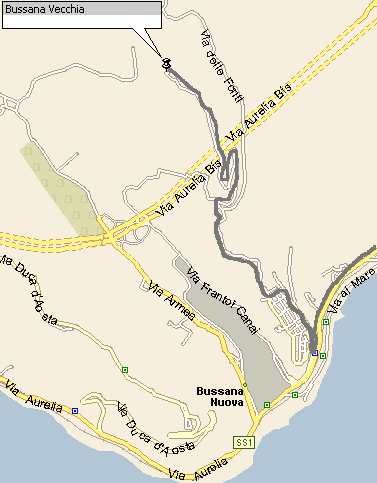 |
In the Easterly direction, one will find the capital of the region, Imperia, at about a 30 minute drive and picturesque tourist towns like Alassio a bit further. The village is also fairly close to the famous town of Brunetti (we'll get to that later)
Going into the mountains, the mediterranean landscape turns into hills and mountains up to 2000 meters. This is the Piemonte region, where many towns seem to have experienced no change since the middle ages. Towns worth a visit North along the Argentina river are Taggia, Badalucco, Molini di Triora, and the "witch town" of Triora. One valley towards San Remo you find the old towns of Poggio and the beautiful old town of Ceriana within half an hour drive, and if you have time you should visit the old "druid" town of Baiardo with its unique location amidst a bowl of mountain slopes which may have been volcanoes millions of years ago.
You need to know that, from a tectonic perspective, most of Italy rests on the northern section of the African continent. This contonent is pushing northward into the European continent, with the Alps as result. That's why there are regularly minor earthquakes along the whole Northern Italian border. An exception was the earthquake on the 23rd of February 1887, which partially destroyed some villages along the Ligurian coast.
Riviera dei Fiori
While browsing through travel magazines you may have concluded that this name
was given to Liguria because there are so many flowers. That is correct. However,
you also need to know that most of these flowers are not along the roads or
in flower pots in the windows, but in hundreds of greenhouses alongside the
coast. In the valle Armea, on the left side of the Bussana hills (seen from
the seaside) you will find one of the largest flower auction markets in Europe,
comparable to the "Aalsmeer" market in Holland.
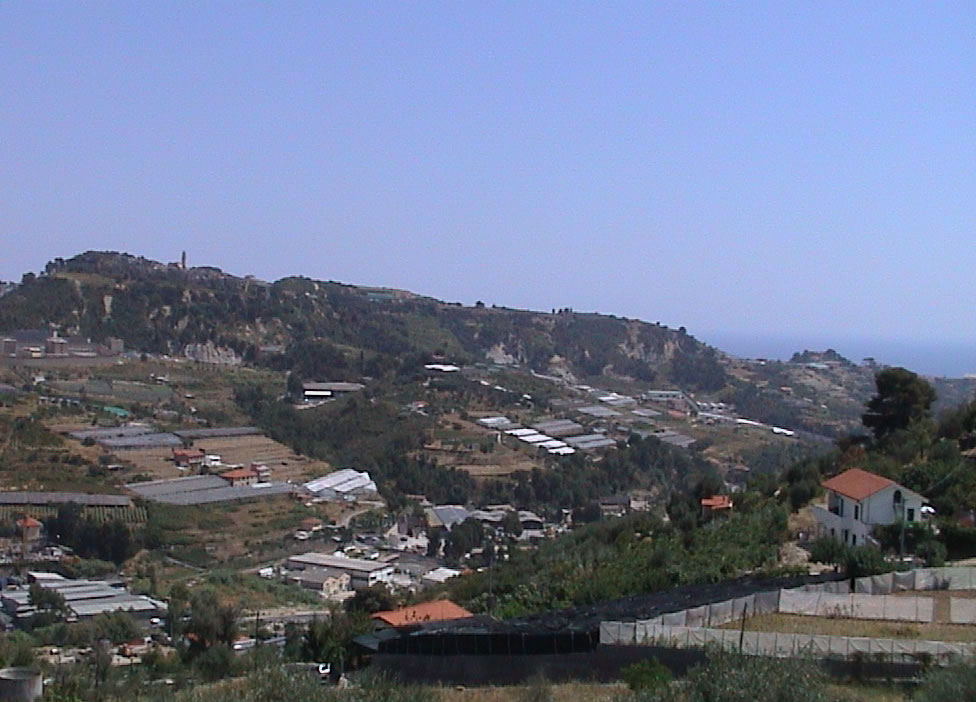 |
While driving
along the French Riviera you will enjoy the hinterland: A green area dotted
with multiple villa's and apartment buildings. Along the Italian Riviera
you will also see many greenhouses which make it visually less
pleasing than the French Riviera. The positive side is that the Italian
villa's are not all owned by foreigners and that it is not only tourism
that brings in the money, like in France. In Liguria, many people make
a decent living from the flower industry and in this respect it offers
a more 'natural' environment than the French Riviera. |
While walking through the old towns like Taggia you may encounter small shops where roses are hand selected by old ladies and packed into airfreight boxes. Near the flower market in valle Armea you may find, very early in the morning, multiple Dutch trucks delivering thousands of miniscule ferns. These ferns will be distributed over the many greenhouses, where they grow up to full size ferns and subsequently hand packed into boxes to be transported back to Holland to be combined with Dutch-grown roses.
San Remo
 |
This mondaine town is known for its international song festival, nowadays only important in Italy. It has had the allure of a town like Nice for many years, with the casino as attraction spot and numerous nightclubs nearby. It has major shopping boulevards as well as an old town that is how Bussana could have looked like one hundred and fifty years ago, before the earhquake. The harbor offers multiple restaurants and an old fortress. Most of the beaches have pebbles and are privately operated. A 20 minute trip on the motorino or 40 minutes by car (including finding a parking spot) will get you there from Bussana |
Taggia
Medieval town and prime town in the area in the past. Some old squares, arches,
and churches as well as an original Roman bridge across the river Argentina.
This medieval bridge held without any problems during the torrential rains
in 2001 while other bridges and roads were swept away. A mere 15 minutes away
from Bussana Vecchia by motorino as well as by car.
Arma di Taggia
 |
This is the harbour of Taggia that has developed into a major holiday location for Italians from the Milano and Torino region. The key feature of Arma is that the via Aurelia runs around town rather than along the coast, as it does in most other beach towns. This allowed the development of nice pedestrian areas and no danger of having to cross a busy coastal artery. Another major recent change is the move of the coastal railway line further inland. This has removed virtually all noise and traffic from the town of Arma. The boulevard stretches out beyond the town's roads and turns into a sort of 'lover's lane' at night, when many hundreds Italians walk the boulevard in their best clothing to watch and be watched. |
Numerous terraces and restaurants
are found both on the beach as well as along the pedestrian area. In the '70s
they made a single mistake to put one high rise (about 20 floors) luxurious
hotel (Victoria) near the beach. Luckily, the local people realized they did
not want this to be a Benidorm- or Miami-like coastal town, so most of the
buildings in town are no more than five floors, which preserves its appearance
of a regular town.
| The town used to get quite some Dutch visitors from the Blue Beach bungalow park on its West side (just into the San Remo/ Bussana al Mare area). That's how I got there for the first time with my parents in 1967. The bungalow camp was run by a Dutch "Friesian" person at that time, the "sympathic Bert Terpstra" as the brochure stated. Bert could, however not maintain his stubborn Dutch/Frisian position against the Italian local bureaucrats and investors, so the park was sold to an Italian in the early 1980's and since then only few Dutch people seem to remember it. Consequently, the town of Arma is primarily for the Italians. |  |
Every new apartment built or for sale is likely to go to a person in Milan or Turin who likes to have a summer apartment near the beach, so there is simply no space for foreigners except for a few hotels like the Swiss hotel. Most rooms in summer are managed by Italian "pensione's" who of course primarily cater to people that they can understand and who appreciate the three meals included in the package and do not bring their own potatoes and peynutbutter like the Dutch (or Germans). Hence, I consider Arma a charming Italian tourist town populated primarily by Italians, and only the people familiar with Italian dialects will be able to differentiate between tourists from Torino, Milano, and elsewhere in Piemonte.
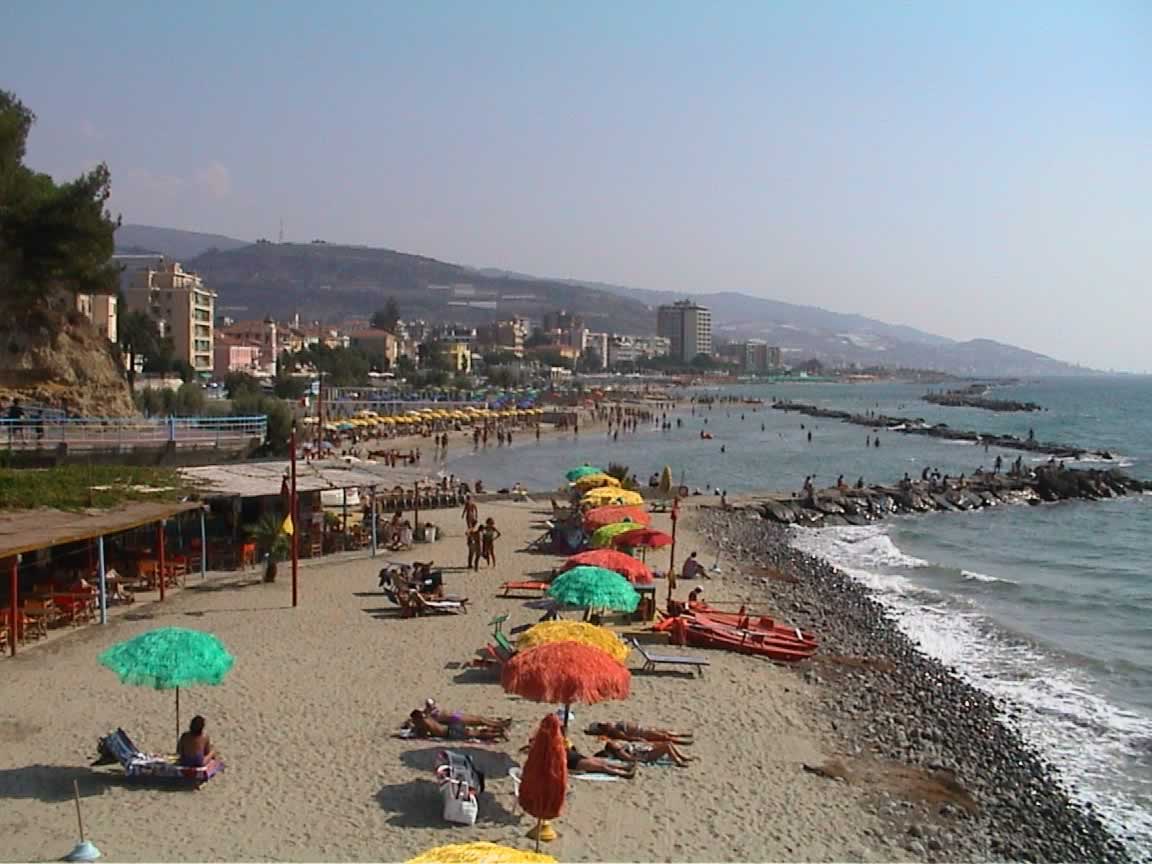 |
Another specific advantage of Arma is that there are little breaker dams in front of part of the bay, which creates a perfect sandy and safe beach environment for young children, of which I happen to create one about a decennium ago. For those who like the higher waves at windy weather, a 1 minute walk to the other side of a little pier will be sufficient. Over the past 30-some years (sic) our choice of beach has eventually stopped at the "Fortezza" area, which is the beach underneath a large medieval ruin of a fortress. To my surprise, and shock, I noticed many years ago that, in this country of spaghetti-eaters and thieves, as some narrow-minded people want to see the Italians, the people going to the beach took their own umbrella's and deckchairs and left them on the beach during their two week vacation! |
For Dutch people used to the fact that everything that is not welded firmly to a major block of concrete will eventually disappear within one night, this was a major culture shock. The only thing you would find, returning to the beach in the morning, is that your chairs had been used by some people having a late night beach outing and were put back near someone else's umbrella. During the holiday peak in August the beaches are overcrowded, but nobody seems to be worried about leaving their money, camera, sunglasses or mobile phone on the beach when they take a dive into the water. Never ever was anything stolen from me in the last umpty years I stayed there.
|
Key locations |
|||||||||||||||||||||||||||||||||||||||||||||||||||||||||||||||||||||||||||||||||||||||||||||||||||||||||||||||||||||||||||||||||||||||||||||||||||||||||||||||||||||||||||||||||||||||||||||||||||||||||||||||||||||||||||||||||||||||||||||||||||||||||||||||||||||||||||||||||||||||||||||||||||||||||||||||||||||||||||||||||||||||||||||||||||||||||||||||||||||||||||||||||||||||||||||||||||||||||||||||||||||||||||||||||||||||||||||||||||||||||||||||||||||||||||||||||||||||||||||||||||||||||||||||||||||||||||||||
Bussana Nuova
| After being forced to evacuate their home town of Bussana after the 1887 earthquake and having lived in tents and barracks for several years, the inhabitants of Bussana were allowed to build a new village somewhat further down the hill toward the sea (the risk of Arab attacks has been reduced somewhat in the past thousand years). In honor of the good Lord sparing them from the earthquake, the people were volunteered to donate for the construction of a new church that would make this visible. Hence the rather big church in the tiny town, now called Bussana Nuova, with the huge golden dome and the allseeing eye of the Lord. | 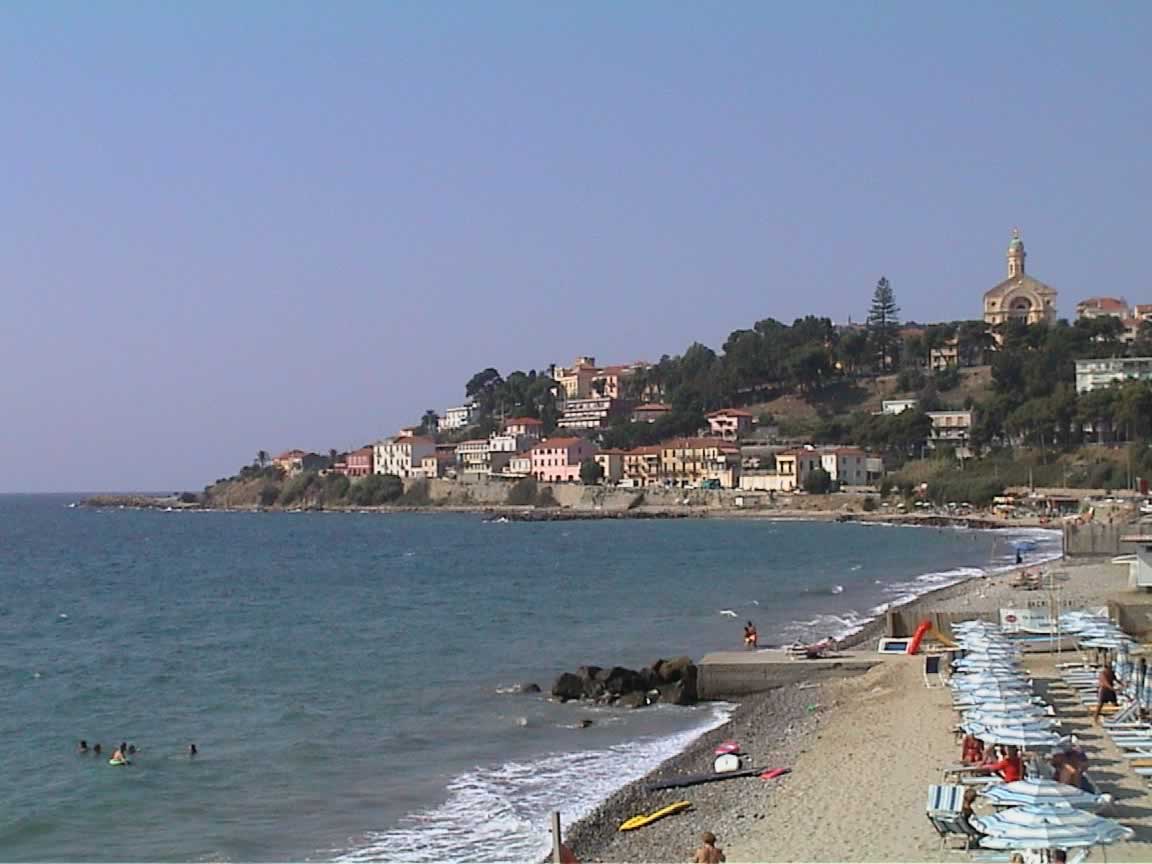 |
This regional page gives a lot of attention to the village of Arma di Taggia, for large part because this beach town allows you combine shopping with going to the beach. Many shops in Bussana Nuova have not survived the emergence of the new "GS" supermarket down the hill, and the few who are left may eventually also disappear. There are still some pleasant local bars with nice snacks and many people to chat with. The bar near the large church is often frequented by the local Bussana Vecchia people, although lately there has been a migration because one of the Bussana Nuova bar owners move to a small bar on the beachfront of Arma.
Continuing the road from Bussana Nuova down to the old Via Aurelia you'll find the large supermarket "GS" on your right hand side. Unlike many shops this one is open during the siesta in the afternoon, and is also open on Sunday.
Imperia
The capitol of this region, Imperia, is much more an industrial town than
San Remo and home of the major pasta factories of Agnesi. The Agnesi factory
in Imperia was the first pasta factory ever to be built in Italy. As far as
I know they do not offer tours, but will check a next time to be sure.
Where San Remo's harbour is for small fishing boats and yachts, Imperia's
harbour is used to ship massive loads of pasta all over the world. It will
not deserve the price for the most attractive city on the Italian Riviera,
but it has an interesting atmosphere because of the daily-life business that
goes on in this town even when most other Italians are at the beach. The old
town stretches down to the harbour, with multiple terraces and restaurants
and local people enjoying a stroll on one of the peers.
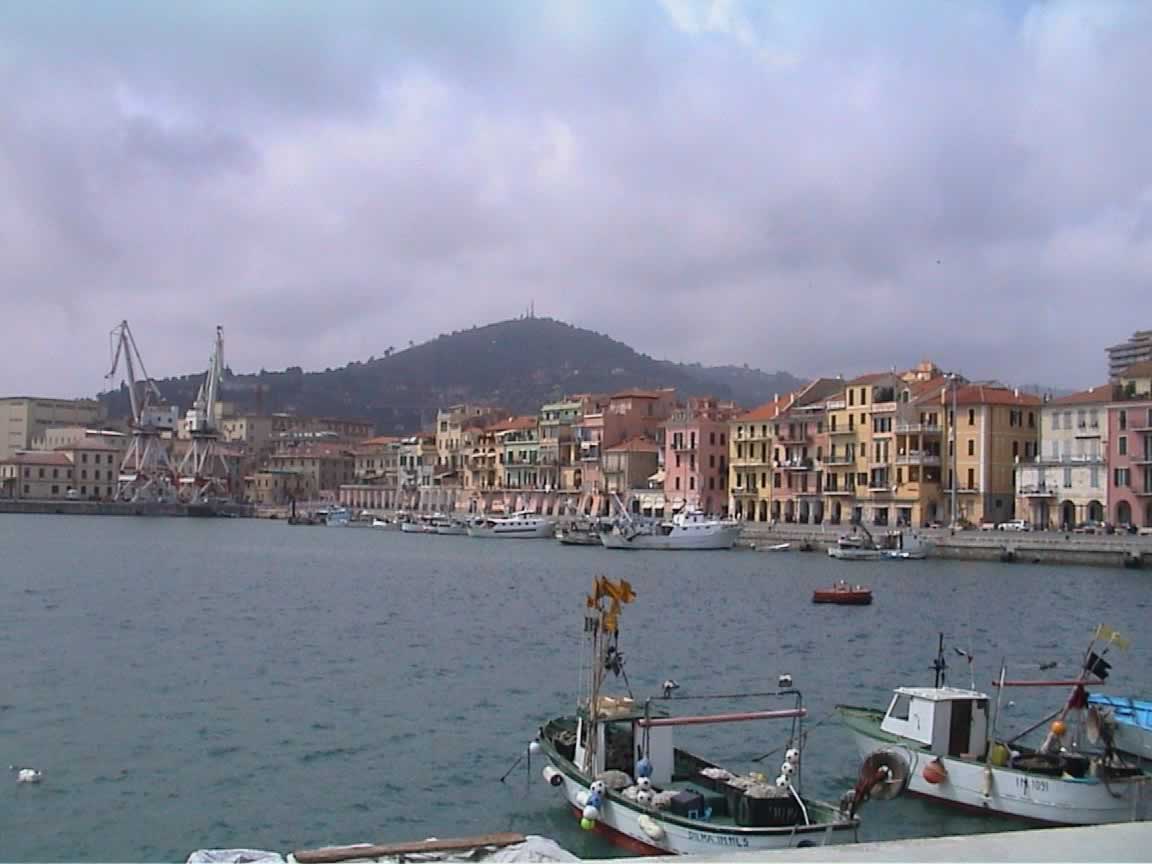 |
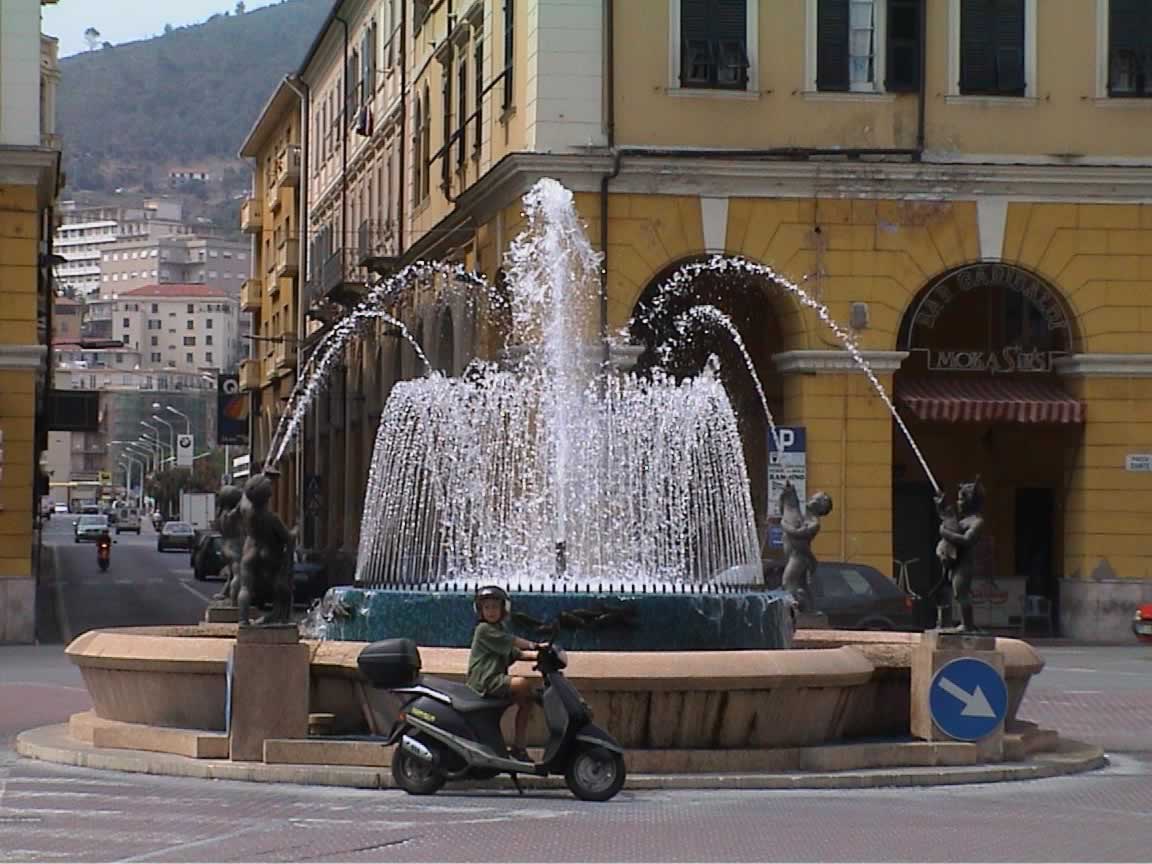 |
Ceriana
A "forgotten" town, too far away for tourists to buy an apartment
and go to the beach every day, and located in the smaller Armea valley without
ongoing roads into Piemonte. Time has stood still in the old parts of Ceriana.
It is known by some of the Bussana Vecchia inhabitants because of its charming
local restaurant (next to the Post Office) run by Joseph and Maria. The road
passing Ceriana is known as an "olive road" and one can find several
good olive oil factories here. Late in autumn, large nets are spread amongst
the trees and by means of poles the good olives are shaken from the trees
and later removed from the nets. This laborious process is one of the reasons
why olive oil often is more pricey than other types of oil from mechanically
harvested seeds.
For the people who are enthousiast hikers: There are excellently marked mountain
paths leading, for example, from the coast via Bussana and the small hilltop
village of Beuzi to Ceriana. Check the Bookstore in Arma for detailed maps
and hiking books. You will also find a few of these maps in my house in Bussana.
 |
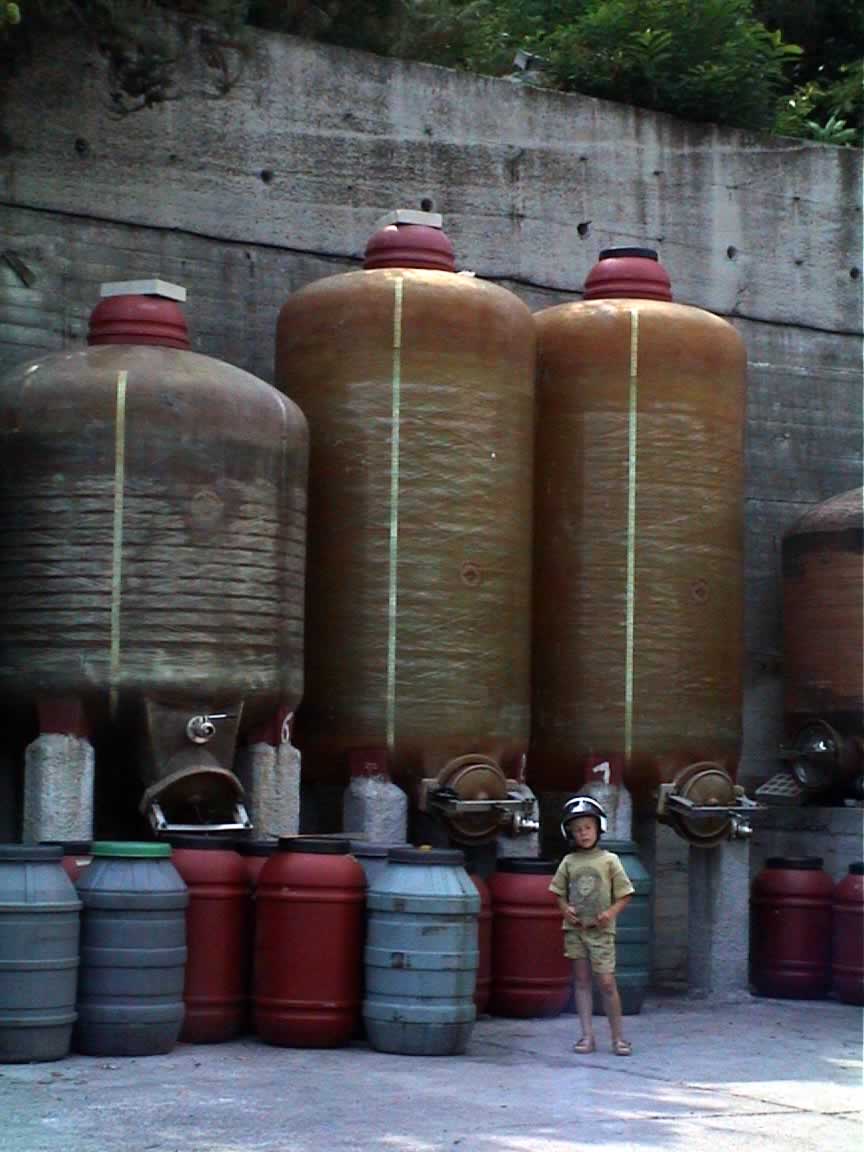 |
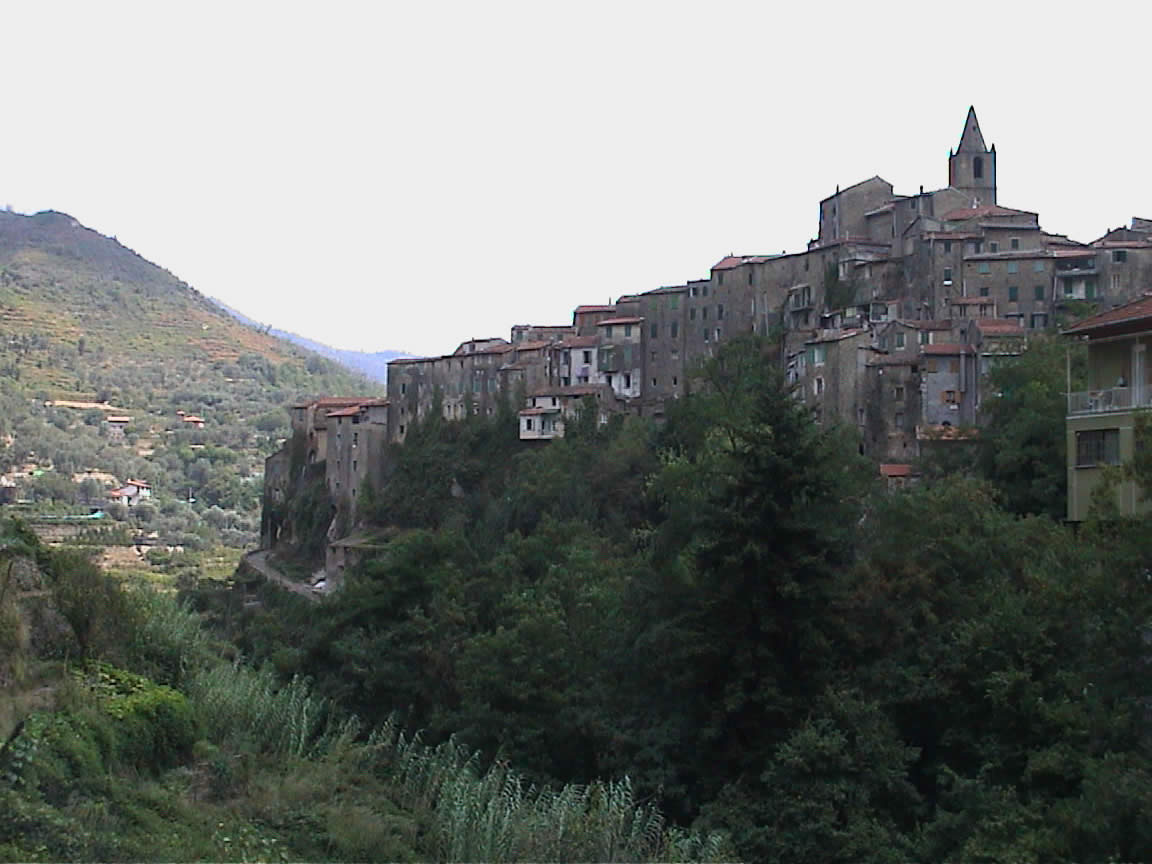 |
Baiardo
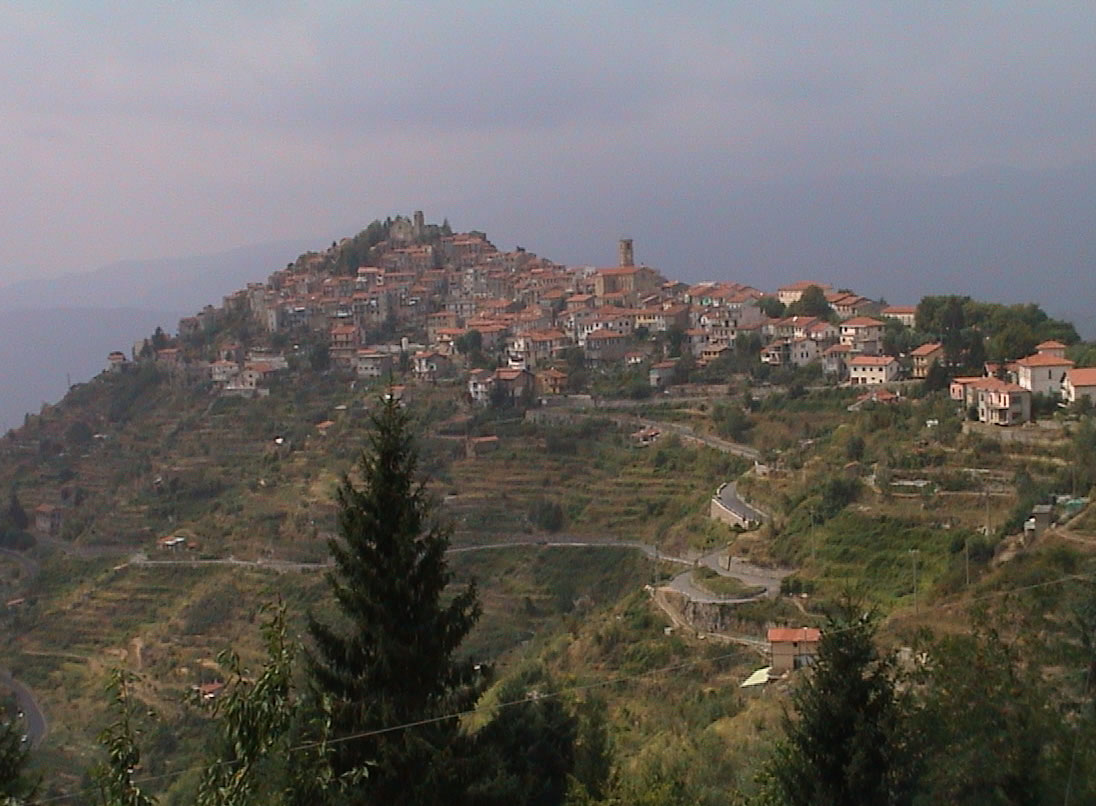 |
The town of Baiardo
is worth the drive from San Remo or from Bussana via Ceriana. Every time
of the probably dozen times I've been there I was amazed by its quiet
location on this extended mountain ridge amidst taller mountains that
somehow block rain from this town. You may drive through mountain fog
or rain during the last few miles to this town, but will almost certainly
find the village in sunlight once you get there. I'm sure this was a key reason for the druids some 1500 years ago to make this into their meeting place. |
As anywhere else in this area,
don't be shy to enter a small restaurant and order whatever food they may
have available. The price will be moderate and you'll be surprised what creative
dishes they can prepare for you. The seating is limited, however, and if you
enter too late for lunch or dinner the local cooks may decide not to fire
up their kitchen specially for you. A MUST visit at Baiardo is the restaurant Jolande, on left side of the road just before the church.
Badalucco
| Next to the presence of Ca'mea, Christian's mushroom restaurant in the "vecchio frantoio", and the "Il Ponte" restaurant (see the restaurant section on these web pages), Badalucco has more to offer. A key moment in the year is the stoccofisso festival mid September. At this festival, Badalucco celebrates how they survived a siege by the arabs in the Middle Ages by eating the stockfish (bacalao) they traded with the Normans in those days. See the interesting article in the "international herald of taste" of December 2001. Also check out the paper on marketing by Tor Korneliussen from the rural studies area of the university of Trondheim, related to stockfish trade. | 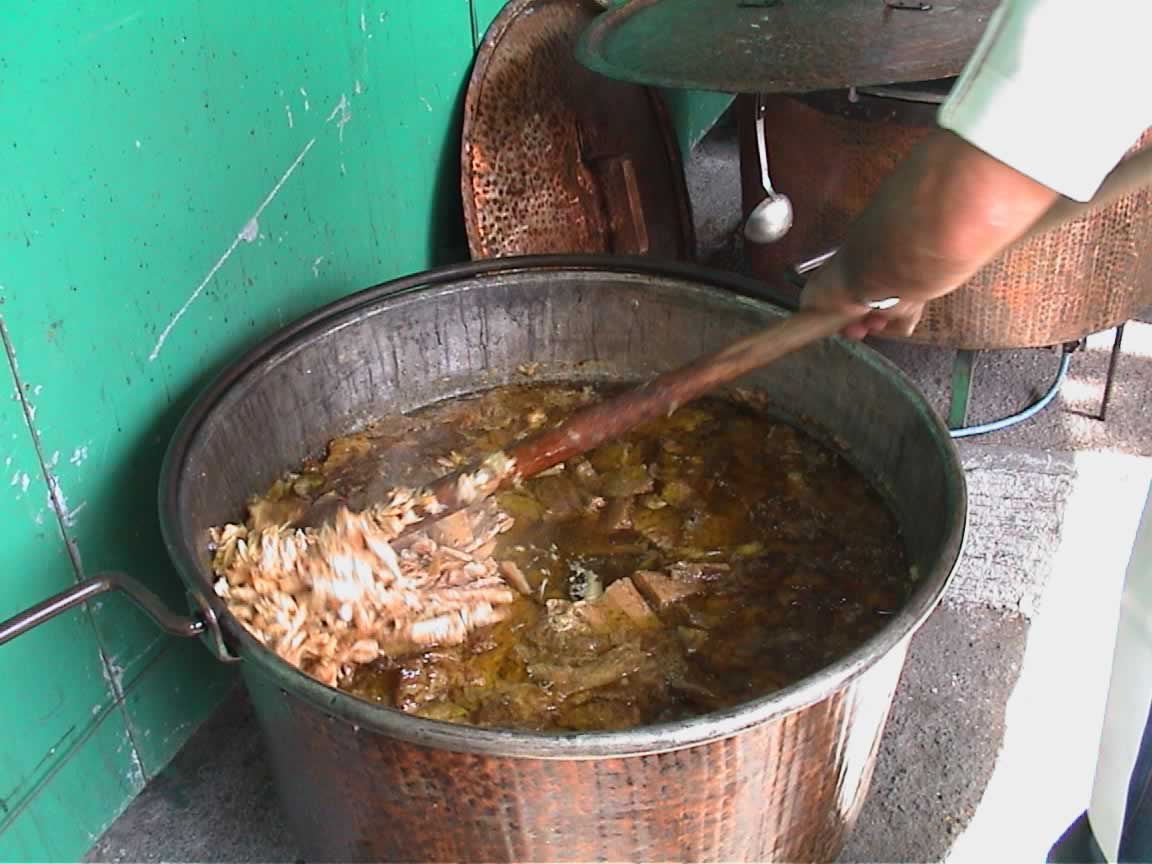 |
If you're around in the second weekend of September you should give the stoccofisso a try. The bone-dry fish is rinsed in fresh water for many days and thereby absorbs multiple times its weight in water. After that, various nuts and herbs are added and the mixture is cooked with olive oil. The mixture is very nutritious and rich in vitamins. Local restaurants will serve their own version of this recipe. Once you've tried it you'll probably agree with me that eating stoccofisso once a year is more than enough.
Brunetti
Now that we're talking about food and historic events: The "must-see"
place in this area is the tiny hamlet of Brunetti. This village still bears
some of the signs of the Brunetti family, creators of the famous traditional
Brutti Baci di Brunetti cookie. You'll find the details here.
A must for cookie (and Brunetti) addicts.